The City of Santiago de Queretaro surprised me. Of the 32 Mexican States, only five are smaller than the State of Queretaro, thus I had expected its capital city to be small and compact, but my bus drove through miles of suburbs sprawled across rolling hills before pulling into the outlying bus terminal. My taxi driver bemoaned the size of the city as well, explaining that just 20 years ago it was small enough to go everywhere by bike. The population of Queretaro (no one uses the full city name) exploded back in 1985, following the magnitude 8.1 earthquake that struck Mexico City, causing the deaths of about 10,000 people and serious damage. Many residents fled the nation’s capital and settled in Queretaro, located just 160 miles to the north.
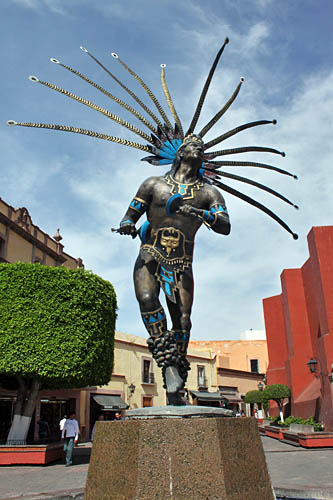
Despite the big city look and feel, I liked Queretaro. The city’s historic center, a UNESCO World Heritage Site, is renowned for its outstanding 17th and 18th century colonial architecture and beauty. The street plan is unusual in that it has kept the geometric plan of the Spanish conquistadors, yet incorporated the twisting alleys of the Indian quarters, many of which have been converted to pedestrian walkways and alleys lined with restaurants and handicraft shops.
As I wandered around the city center, it became apparent that art is an important cultural element in Queretaro. Young street musicians strum guitars and play classical selections on violins, theater arts students perform skits in the plazas, and the open spaces, alleys, and narrow lanes are decorated with an amazing array of outdoor sculpture.
Wandering is the very best way to discover this charming city, but to do so I needed sustenance. I started my days with a visit to the local candy shop, which specializes in regional specialties like burnt milk candy, and munched to my heart’s content as I explored Queretaro’s plazas, Viceroyalty houses, and scores of churches featuring architectural styles ranging from Baroque to Neoclassical.
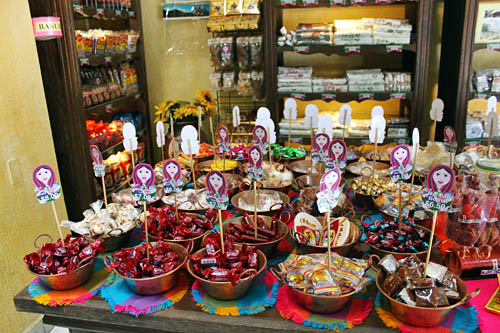
The Convent of the Holy Cross (Convento de la Santa Cruz) is particularly famous for being the site where the Spanish conquest of Queretaro ended in 1531. During the battle between Spaniards and the indigenous people, a vision of a cross appeared in the sky. With both sides awestruck, the battle ended immediately. A replica of that cross, carved in stone, is today suspended above the main altar of the church. Coincidentally, thorns in the perfect shape of a cross grow on an extremely rare ancient tree found in the garden of the convent.
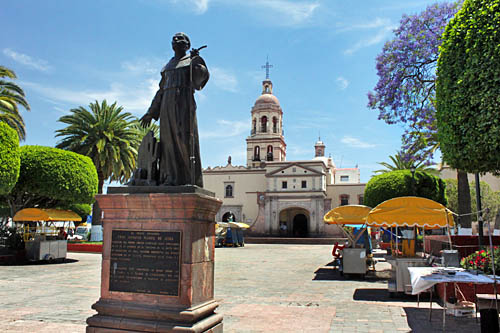
Whenever my sugar high took a nosedive, I plopped on a bench in one of the city’s plazas and parks. Some of the public areas are broad open spaces with spectacular fountains while others are lushly planted gardens tucked into corners, but all offer the opportunity to people watch and absorb the rhythm of Queretaro. Plaza de las Armas, considered to be one of the most beautiful squares in Latin America, is surrounded by colonial buildings and legendary houses, planted with meticulously trimmed trees. At its center stands a statue of the Marquis de la Villa del Aguila, the builder of Queretaro’s Aqueduct. However my favorites were Jardin Zenea, with its 19th century band kiosk and sculpture of the Greek goddess Hebe, and Plaza de la Constitucion.The latter is a spacious pansy-bordered square with a giant fountain in the center that spouts waters in time to American pop rock songs broadcast over a public address system.
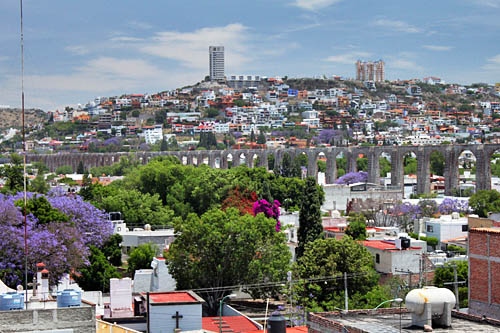
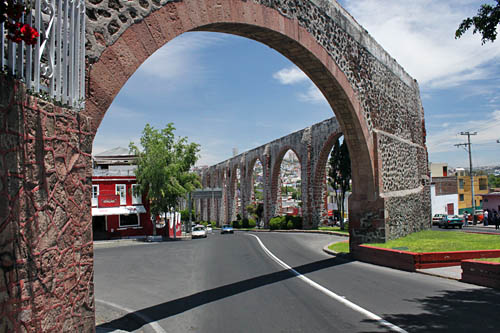
Queretaro continued to surprise me with each passing day. Through the State’s Tourism Office I learned about an astounding array of natural wonders and attractions around the State of Queretaro, including eco-camps, archeological sites, vineyards, botanical gardens, and more than 250 culturally significant Otomi chapels. In the northern districts, the Sierra Gorda mountains are home to waterfalls, caves, and a Biosphere Reserve that I would have loved to visit, but it would have meant reversing direction. Instead, I chose two attractions to the south, the tiny town of Bernalde la Pena, which has earned Mexico’s coveted Pueblo Magico (Magic Town) designation, and the even tinier village of Tequisquiapan. The rest of the State will have to wait for my return visit.

so well written, thanks for this guide! I’ll sure need it soon 😀
keep up the good work!
You’re welcome Roxana. I appreciate you letting me know you found it helpful.
When you return to this city you’ll love to see that it will have had a face lift. Plus the River is being renovated too.
http://www.elfinanciero.com.mx/index.php/sociedad/corresponsales/34657-remodelan-centro-historico-de-queretaro
http://www.libertaddepalabra.com/2011/03/modificaran-fachadas-de-casas-del-centro-historico-de-queretaro/
It’s beautiful, and what a shame you couldn’t explore more. I wish you could publish this on the front page of CNN or somewhere so that people can see that there is more to Mexico than drug killings and spring break in Cancun!
Thise kids at the fountain make me laugh – who wouldn’t scream at getting drenched & the teacher trying to restore order! I thought your camera might have been dranched too but then I see you weren’t that close.
What is the best website on the internet that provide travel tips to Thailand ?`–
Angelina:
I rely a lot on the Lonely Planet ThornTree forums for all areas of the world. The link for Thailand is: http://www.lonelyplanet.com/thorntree/forum.jspa?forumID=51. If you want tourism info, try Thailand’s official tourism site: http://www.tourismthailand.org or another one that I find to be very well done: http://www.sawadee.com. Hope that helps. Barbara